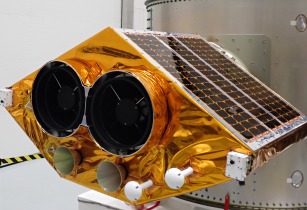As part of the Transporter-6 mission, EOS SAT-1, the first imaging satellite to be built by Dragonfly Aerospace, has lifted off from SpaceX’s launch site in Cape Canaveral, Florida
The satellite is the first of a seven-satellite constellation in low Earth orbit for customer EOSDA (EOS Data Analytics). The remaining six satellites of the constellation will be deployed over the next three years.
EOS SAT is the world’s first agriculture-focused satellite constellation providing the agriculture and forestry industry with high-quality data to support efficient and sustainable practices.
Images obtained from Dragonfly’s EOS SAT-1 will deliver valuable information for harvest monitoring, application mapping, seasonal planning and assessments that analyse information such as soil moisture, yield prediction and biomass levels. This data will support growers with reducing carbon dioxide emissions and help them to develop sustainable agricultural methods.
Equipped with two DragonEye electro-optical imagers, EOS SAT-1 will provide 44 km swath panchromatic and multispectral imagery across 11 spectral bands at close to 1 m resolution – making it one of the most capable imaging satellites in LEO.
“This is a momentous achievement for Dragonfly Aerospace and we are thrilled to have delivered EOS SAT-1 to orbit with a number of firsts – the first imaging satellite designed and built by Dragonfly, the first microsatellite to be manufactured in South Africa since 2009, the first satellite of the EOS SAT constellation and the first agri-focused constellation in space," said Bryan Dean, CEO and co-founder of Dragonfly Aerospace.
"This has been an important project for our whole team and has allowed us to demonstrate our capabilities, not just in producing high-performance electro-optical imagers, but in designing and manufacturing a full imaging satellite system. It is an amazing feeling to see EOS SAT-1 leave the launch pad and take the next step in its journey to delivering crucial data that will have important environmental benefits for our planet," Dean added.
“We look forward to supporting EOSDA with its mission to launch the next six satellites by 2025.”





